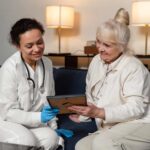The journey toward practicing medicine in the United States as a foreign-trained physician represents one of the most challenging yet rewarding professional paths in healthcare. Each year, thousands of international medical graduates navigate the complex certification process, contributing their diverse expertise and perspectives to American healthcare while pursuing their dreams of practicing medicine at the highest standards. This comprehensive guide illuminates the intricate pathway from foreign medical education to board certification, providing essential insights for physicians planning to establish their medical careers in the United States.
The United States medical system relies significantly on international medical graduates, who constitute approximately one-quarter of practicing physicians nationwide. These dedicated professionals fill critical gaps in healthcare delivery, particularly in underserved communities and specialized fields facing physician shortages. Despite their crucial role, the path to full certification and practice authorization involves multiple examinations, extensive documentation, clinical training, and substantial financial investment. Understanding each component of this journey enables foreign medical professionals to navigate the process strategically and efficiently.
The complexity of the American medical certification system reflects the country’s commitment to maintaining exceptional standards of medical practice while recognizing the valuable contributions of internationally trained physicians. From initial credential verification through specialized board certification, each step serves a specific purpose in ensuring that all physicians, regardless of where they received their medical education, meet uniform standards of knowledge, clinical competency, and professional conduct.
Understanding the Educational Credential Assessment Requirements
The foundation of any foreign medical professional’s journey toward US practice begins with establishing the equivalency and authenticity of their medical education. The Educational Commission for Foreign Medical Graduates (ECFMG) serves as the primary organization responsible for evaluating international medical credentials and certifying that foreign medical graduates are ready to enter US graduate medical education programs. This crucial first step determines eligibility for subsequent examinations and training opportunities.
Medical schools outside the United States and Canada must be listed in the World Directory of Medical Schools with a sponsor note from ECFMG to qualify their graduates for certification. This requirement ensures that only graduates from recognized institutions with appropriate educational standards can proceed through the certification process. Foreign medical graduates must submit comprehensive documentation including medical diplomas, transcripts, and verification of their medical education directly from their medical schools. The verification process has evolved to include primary source verification, where ECFMG communicates directly with medical schools to confirm the authenticity of credentials.
The timeline for credential verification varies significantly based on the responsiveness of foreign medical schools and the completeness of submitted documentation. Some institutions respond quickly to verification requests, completing the process within weeks, while others may take several months. Graduates from certain countries face additional challenges due to political situations, administrative inefficiencies, or different academic record-keeping systems. Planning for these potential delays and initiating the verification process early proves essential for maintaining momentum toward certification.
Translation requirements add another layer of complexity for graduates whose medical education documents are not in English. Official translations must be completed by certified translators, with both original documents and translations submitted for review. The cost of professional translation services, combined with document authentication requirements such as apostille certification for certain countries, can represent a significant early expense in the certification journey. Understanding these requirements and budgeting accordingly helps foreign medical professionals avoid unexpected delays and costs.
The evaluation process extends beyond simple diploma verification to include assessment of medical education quality and duration. ECFMG requires that foreign medical schools provide education comparable to US medical schools, including appropriate basic science education, clinical rotations, and supervised patient care experience. Schools must demonstrate that their curriculum meets specific standards for hours of instruction, clinical exposure, and assessment methods. This comprehensive evaluation ensures that foreign medical graduates possess foundational knowledge and clinical exposure comparable to their US-trained counterparts.
The United States Medical Licensing Examination Journey
Successfully completing the United States Medical Licensing Examination sequence represents the most significant academic challenge for foreign medical professionals seeking US practice authorization. The three-step USMLE series assesses whether physicians possess the knowledge, skills, and clinical judgment essential for safe and effective patient care. Foreign medical graduates must pass the same examinations as US medical students, demonstrating mastery of basic sciences, clinical knowledge, and patient management skills.
Step 1 of the USMLE focuses on basic medical sciences and their application to clinical practice. This computer-based examination tests understanding of anatomy, biochemistry, microbiology, pathology, pharmacology, and physiology, emphasizing the mechanisms of health and disease. Foreign medical graduates often face unique challenges with Step 1, as their medical education may have emphasized different aspects of basic sciences or used different teaching methodologies. Many successful candidates invest months in dedicated preparation, utilizing comprehensive review courses, question banks, and study groups to ensure thorough coverage of tested concepts.
Step 2 consists of two components: Clinical Knowledge (CK) and Clinical Skills (CS), though the CS component has been discontinued as of 2021. Step 2 CK evaluates clinical knowledge and the application of medical science to patient care, covering internal medicine, surgery, pediatrics, psychiatry, obstetrics and gynecology, and preventive medicine. This examination requires not only medical knowledge but also understanding of clinical decision-making processes and patient management strategies common in US healthcare settings. Foreign medical graduates must familiarize themselves with American clinical guidelines, diagnostic approaches, and treatment protocols that may differ from practices in their home countries.
Step 3 represents the final examination in the USMLE sequence, assessing whether physicians can apply comprehensive medical knowledge and understanding of biomedical and clinical science essential for unsupervised medical practice. This two-day examination includes multiple-choice questions and computer-based case simulations that test clinical management skills. Unlike Steps 1 and 2, which can be taken before residency, Step 3 is typically completed during or after the first year of residency training. The examination emphasizes patient management in ambulatory settings, reflecting the increasing importance of outpatient care in US healthcare delivery.
Preparation strategies for USMLE examinations require significant investment of time, energy, and financial resources. Successful foreign medical graduates often dedicate 6-12 months to Step 1 preparation, 3-6 months for Step 2 CK, and 2-3 months for Step 3. Commercial review courses, question banks, and study materials can cost thousands of dollars, in addition to examination fees that total over $5,000 for the complete series. Many candidates form study groups with other foreign medical graduates, sharing resources and providing mutual support through the challenging preparation period.
ECFMG Certification and Clinical Skills Assessment
Achieving ECFMG certification marks a crucial milestone for foreign medical professionals, as this credential is required for entry into US residency programs and subsequent medical practice. The certification process involves multiple components beyond USMLE examinations, including verification of medical credentials, demonstration of English language proficiency, and previously, assessment of clinical and communication skills. Understanding all certification requirements and maintaining compliance throughout the process proves essential for timely progression toward residency training.
English language proficiency requirements recognize that effective communication is fundamental to safe medical practice in English-speaking healthcare environments. Foreign medical graduates from countries where English is not the primary language must demonstrate proficiency through standardized examinations. The Occupational English Test (OET) has become increasingly popular among medical professionals, as it focuses specifically on healthcare communication scenarios. Alternative options include the Test of English as a Foreign Language (TOEFL) and International English Language Testing System (IELTS), though these general English proficiency tests may not fully prepare candidates for medical communication requirements.
The former Clinical Skills examination component, while discontinued, previously required foreign medical graduates to demonstrate history-taking, physical examination, and patient communication skills in standardized patient encounters. Many residency programs now conduct their own clinical skills assessments during the interview process, making strong clinical and communication skills even more critical for successful residency matching. Foreign medical graduates benefit from seeking opportunities to observe or volunteer in US clinical settings to familiarize themselves with American patient interaction styles and clinical practices.
Medical ethics and professionalism standards in US healthcare may differ significantly from those in other countries, requiring foreign medical graduates to understand and adapt to American expectations. ECFMG certification includes attestation to professional conduct standards and understanding of ethical principles governing US medical practice. Issues such as patient autonomy, informed consent, confidentiality, and boundary management may be approached differently in US healthcare settings. Successful integration requires not only intellectual understanding but also practical application of these principles in clinical interactions.
Maintaining ECFMG certification requires ongoing compliance with various requirements, including reporting of any licensure actions, criminal proceedings, or changes in medical education status. The certification does not expire, but certain components may have validity periods that affect residency application eligibility. For example, USMLE Step 2 CS results were previously valid for only three years for ECFMG certification purposes, though this is no longer relevant with the exam’s discontinuation. Understanding these nuances helps foreign medical graduates plan their certification and residency application timeline strategically.
Navigating the Residency Match Process
The National Resident Matching Program (NRMP) Match represents a critical juncture where foreign medical graduates compete for limited residency positions that will provide the graduate medical education required for independent practice and board certification. The match process involves complex strategies, careful program selection, and compelling application presentation to secure interviews and ultimately match into a residency program. Understanding match dynamics and optimizing application strategies significantly impacts success rates for international medical graduates.
Application preparation through the Electronic Residency Application Service (ERAS) requires assembling comprehensive documentation that presents qualifications in the most favorable light. Beyond basic credentials and examination scores, successful applications include carefully crafted personal statements that articulate career goals and explain the journey from foreign medical education to US residency pursuit. Letters of recommendation carry particular weight, especially those from US physicians who can attest to the applicant’s readiness for American medical training. Many foreign medical graduates pursue clinical experience in US hospitals through observerships or externships specifically to obtain these crucial recommendations.
Program selection strategy requires realistic assessment of competitiveness and careful research into programs’ international medical graduate friendliness. Some residency programs have strong traditions of training foreign medical graduates and provide robust support for visa sponsorship and cultural adaptation. Others may rarely interview or accept international candidates despite not explicitly stating such preferences. Analyzing match data, connecting with current residents from similar backgrounds, and understanding program-specific requirements helps foreign medical graduates focus their applications on programs where they have realistic chances of success.
Interview preparation for foreign medical graduates extends beyond typical residency interview readiness to include addressing unique challenges and potential concerns. Programs may question gaps in training, differences in medical education systems, or ability to adapt to US healthcare culture. Successful candidates prepare clear, confident explanations for their career trajectory and demonstrate thorough understanding of American medical practice. Cultural differences in communication styles, from level of formality to expression of confidence, require careful navigation to make positive impressions while remaining authentic.
The financial burden of the match process disproportionately affects foreign medical graduates who may need to travel internationally for interviews, maintain US addresses for correspondence, and cover extended periods without income during preparation and application seasons. Interview expenses alone can exceed $10,000 for candidates interviewing at multiple programs across the country. Some programs offer virtual interview options, which became standard during recent pandemic years, providing some relief from travel costs. However, in-person interactions often provide advantages in making memorable impressions and assessing program culture.
Visa Sponsorship and Immigration Considerations
Securing appropriate visa status for residency training and subsequent medical practice represents a parallel challenge to the medical certification process. Foreign medical graduates must navigate complex immigration requirements while progressing through medical training, with visa status potentially affecting program selection, career trajectory, and long-term settlement plans. Understanding available visa options and their implications helps foreign physicians make informed decisions throughout their US medical careers.
The J-1 Exchange Visitor visa remains the most common pathway for foreign medical graduates entering residency training. Sponsored by ECFMG, J-1 visas are specifically designed for medical training and relatively straightforward to obtain once matched into a residency program. However, J-1 visas carry a two-year home residency requirement, mandating that physicians return to their home countries for two years after completing training unless they obtain a waiver. This requirement significantly impacts career planning and may limit options for fellowship training or immediate transition to practice.
H-1B temporary worker visas offer an alternative that avoids the home residency requirement but involves more complex sponsorship requirements and annual caps that may delay start dates. Residency programs must sponsor H-1B visas directly, involving greater administrative burden and cost compared to J-1 sponsorship. Not all programs offer H-1B sponsorship, limiting options for candidates requiring this visa type. The H-1B pathway potentially leads more directly to permanent residency, making it attractive for physicians planning long-term US careers despite initial complications.
Conrad 30 waiver programs provide pathways for J-1 physicians to waive the home residency requirement by committing to practice in medically underserved areas for three years. Each state can sponsor up to 30 waivers annually for physicians who agree to work in designated shortage areas. This option appeals to many foreign medical graduates as it allows continuation of US medical careers while serving communities with critical physician shortages. Understanding state-specific requirements and application processes for Conrad 30 positions requires careful research and often legal consultation.
Green card processes for physicians involve multiple potential pathways, including employer sponsorship, national interest waivers, and extraordinary ability petitions. The physician national interest waiver program allows qualified physicians to self-petition for permanent residency by agreeing to work in underserved areas for five years. This option provides independence from employer sponsorship but requires careful documentation of qualifications and commitment to underserved practice. Processing times for permanent residency vary significantly based on country of birth and category, with some physicians waiting many years for green card approval.
Specialty Board Certification Requirements
Achieving board certification in a medical specialty represents the culmination of years of training and examination, establishing foreign medical professionals as fully qualified specialists in their chosen fields. The American Board of Medical Specialties (ABMS) oversees 24 member boards that certify physicians in 40 specialties and 88 subspecialties. Understanding specific board requirements, examination processes, and maintenance of certification obligations helps foreign medical graduates plan their progression from residency through career-long professional development.
Residency training requirements for board eligibility vary by specialty but generally require completion of Accreditation Council for Graduate Medical Education (ACGME) accredited programs. Foreign medical graduates must ensure their residency programs meet board requirements, as some boards have specific conditions regarding international medical graduate training. The duration of required training ranges from three years for specialties like internal medicine and pediatrics to seven or more years for complex surgical subspecialties. Understanding these timelines helps foreign physicians plan their career progression and visa strategies accordingly.
Board examination formats have evolved to include both written and oral components for many specialties, testing not only medical knowledge but also clinical judgment, professionalism, and communication skills. Foreign medical graduates may face particular challenges with oral examinations that require rapid processing of clinical scenarios and clear articulation of management plans in English. Cultural differences in clinical approach or communication style may affect performance if not adequately addressed during preparation. Many successful candidates participate in board review courses and mock oral examinations to familiarize themselves with examination formats and expectations.
Continuous certification requirements now characterize most medical specialty boards, replacing previous lifetime certification models. Maintenance of certification involves ongoing continuing medical education, quality improvement activities, and periodic examinations. These requirements ensure that all physicians, regardless of training origin, maintain current knowledge and skills throughout their careers. Foreign medical graduates must factor these ongoing requirements into career planning, as maintenance of certification affects hospital privileging, insurance credentialing, and employment opportunities.
Subspecialty certification options allow physicians to demonstrate expertise in focused areas of practice, potentially enhancing career opportunities and compensation. Many foreign medical graduates pursue fellowship training after residency to gain subspecialty certification and strengthen their competitiveness in the job market. The additional training time requires extended visa maintenance and delayed entry into independent practice but often results in improved career prospects and professional satisfaction. Understanding the relationship between specialty and subspecialty certification helps foreign physicians make strategic decisions about training pathways.
Financial Planning and Career Investment Strategies
The financial implications of pursuing US medical certification and training extend far beyond examination fees and require comprehensive planning to manage successfully. Foreign medical professionals often face unique financial challenges including lack of US credit history, ineligibility for federal student loans, and need to support families while earning resident salaries. Understanding the full scope of financial requirements and developing sustainable funding strategies proves essential for completing the certification journey without overwhelming debt burden.
Examination and application costs represent just the initial investment in US medical certification. USMLE examination fees exceed $5,000 for the complete series, with additional costs for retakes if needed. ECFMG certification fees, ERAS application costs, and NRMP match fees add thousands more. Board certification examinations typically cost $2,000-$4,000, with additional fees for maintenance of certification activities. These direct costs don’t include indirect expenses such as study materials, review courses, travel for examinations, and lost income during preparation periods.
Living expenses during training present ongoing financial challenges, particularly in high-cost urban areas where many training programs are located. Resident salaries, typically ranging from $55,000 to $70,000 annually, must cover living expenses, insurance, transportation, and potentially support for family members. Foreign medical graduates may lack the family financial support available to many US medical graduates and must carefully budget to manage expenses within limited incomes. Understanding compensation structures, moonlighting opportunities where permitted, and financial assistance programs helps foreign physicians maintain financial stability during training.
Educational debt from foreign medical education may complicate financial planning for US training and practice. Unlike US medical graduates who may access income-driven repayment plans for federal loans, foreign medical graduates with international education debt face different repayment obligations and fewer assistance options. Currency fluctuations can affect the real burden of foreign debt, requiring careful monitoring and potentially strategic repayment timing. Some physicians pursue loan consolidation or refinancing once established in US practice to manage international education debt more effectively.
Investment in professional development beyond mandatory requirements can significantly impact career trajectory and earning potential. Additional certifications, advanced training, and leadership development programs require financial investment but may yield substantial returns through enhanced career opportunities. Foreign medical graduates who strategically invest in distinguishing qualifications often find improved job prospects and negotiating positions. Understanding which investments provide greatest return in specific specialties and practice settings helps physicians allocate limited resources effectively.
Professional Integration and Practice Establishment
Successfully transitioning from training to independent practice requires foreign medical professionals to navigate additional challenges beyond clinical competency and board certification. Establishing professional credibility, building patient relationships, and integrating into medical communities demands cultural adaptation and strategic professional development. Understanding these aspects of practice establishment helps foreign-trained physicians build successful, sustainable medical careers in the United States.
Hospital credentialing and insurance panel participation represent critical steps in establishing independent practice. The credentialing process involves extensive verification of training, certification, and professional history, potentially taking several months to complete. Foreign medical graduates may face additional scrutiny or documentation requirements, particularly if training occurred at less familiar international institutions. Maintaining organized records of all training, certifications, and professional activities throughout one’s career facilitates smooth credentialing processes. Understanding typical credentialing timelines and requirements helps physicians plan practice transitions effectively.
Building professional networks within American medical communities requires intentional effort and cultural navigation. Professional relationships influence referral patterns, collaboration opportunities, and career advancement. Foreign medical graduates may initially lack the natural networks formed during US medical education and must actively cultivate professional connections. Participation in medical societies, hospital committees, and community health initiatives provides opportunities for network development. Understanding American professional networking norms and expectations helps foreign physicians build meaningful professional relationships.
Patient relationship development may require adaptation to American healthcare consumer expectations and communication preferences. Patients in the United States often expect collaborative decision-making, detailed explanations of conditions and treatments, and ready access to their physicians. Foreign medical graduates from systems with more hierarchical physician-patient relationships must adjust communication styles accordingly. Building trust with patients from diverse backgrounds, including those who may have preconceptions about foreign-trained physicians, requires consistent demonstration of competence and cultural sensitivity.
Malpractice insurance and risk management considerations affect all US physicians but may particularly concern foreign medical graduates unfamiliar with the American medicolegal environment. Understanding malpractice insurance options, coverage limits, and risk management strategies proves essential for protecting personal assets and professional reputation. The litigious nature of American healthcare requires careful attention to documentation, informed consent processes, and patient communication. Many foreign physicians benefit from risk management education and mentorship to navigate this aspect of US practice successfully.
Continuing Education and Career Advancement
The journey of a foreign medical professional in the United States extends well beyond initial certification and board qualification. Maintaining competency, advancing professionally, and contributing to American medicine requires ongoing commitment to education and professional development. Understanding opportunities for continued growth and advancement helps foreign-trained physicians build fulfilling, impactful careers that leverage their unique perspectives and experiences.
Continuing medical education requirements vary by state and specialty board but generally mandate significant annual educational activities. Foreign medical graduates must navigate these requirements while potentially addressing knowledge gaps related to US-specific practices or guidelines. Online educational platforms, medical conferences, and journal-based programs provide flexible options for meeting CME requirements. Strategic selection of educational activities that address both mandatory requirements and professional interests maximizes the value of time and resources invested in continuing education.
Leadership development opportunities in healthcare organizations increasingly recognize the value of diverse perspectives in addressing complex healthcare challenges. Foreign medical graduates who demonstrate clinical excellence and leadership potential may find opportunities to influence healthcare delivery and medical education. Understanding American healthcare administration, developing business acumen, and building leadership skills through formal programs or mentorship positions foreign physicians for advancement into administrative or academic leadership roles.
Academic medicine offers foreign medical graduates opportunities to combine clinical practice with teaching and research. Many international medical graduates find fulfillment in training the next generation of physicians while conducting research that advances medical knowledge. The academic pathway requires additional skills in grant writing, research methodology, and educational theory. Foreign physicians bringing unique research perspectives or international collaboration opportunities may find particular value in academic medical centers seeking to expand global health initiatives.
Innovation and entrepreneurship in healthcare increasingly welcome diverse perspectives and international experience. Foreign medical graduates who identify unmet needs or innovative solutions based on their varied experiences may pursue entrepreneurial ventures alongside or instead of traditional practice. Understanding US healthcare markets, regulatory requirements for medical innovations, and startup ecosystems helps foreign physicians translate innovative ideas into viable ventures. The combination of medical expertise and diverse perspective positions international medical graduates as valuable contributors to healthcare innovation.
Conclusion
The board certification process for foreign medical professionals represents a demanding but achievable pathway to practicing medicine in the United States at the highest standards. Through systematic progression from credential verification through specialty board certification, thousands of international medical graduates successfully join the American physician workforce each year, enriching healthcare delivery with their diverse expertise and perspectives. The journey requires substantial investment of time, money, and effort, but yields opportunities for professional fulfillment and meaningful contribution to patient care.
Success in navigating this complex process depends on thorough understanding of requirements, strategic planning, and persistent effort through challenges. Foreign medical professionals who approach the certification journey with clear goals, realistic expectations, and commitment to meeting US standards find that American medical practice offers remarkable opportunities for professional growth and impact. The support systems available through ECFMG, professional organizations, and immigrant physician communities provide valuable resources for overcoming obstacles and achieving certification goals.
The contributions of foreign medical professionals to American healthcare extend far beyond filling workforce gaps in underserved areas. These physicians bring diverse clinical experiences, cultural competencies, and innovative perspectives that enhance healthcare delivery for increasingly diverse patient populations. Their journeys through rigorous certification processes demonstrate exceptional dedication and resilience that often translates into compassionate, committed patient care. Healthcare institutions and communities that embrace international medical graduates benefit from their unique contributions to medical practice and healthcare innovation.
Looking forward, the pathway for foreign medical professionals will likely continue evolving in response to healthcare workforce needs, technological advances, and changes in medical education. Ongoing efforts to streamline certification processes while maintaining quality standards may reduce barriers for qualified international physicians. Digital technologies enabling remote assessment and education may expand access to preparation resources and support services. These developments suggest that while the journey will remain challenging, opportunities for foreign medical professionals to contribute to American healthcare will continue expanding.
The personal and professional transformation that occurs through the board certification process shapes foreign medical professionals into uniquely valuable members of the American physician workforce. The combination of international medical education, rigorous US certification, and diverse life experiences creates physicians capable of bridging cultural divides, innovating in care delivery, and addressing complex health challenges. For foreign medical professionals willing to undertake this challenging journey, the board certification process opens doors to rewarding careers serving patients and advancing medicine in one of the world’s most advanced healthcare systems.






